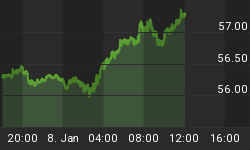KFC is out of chicken, and Burger King is short on fries, while Starbucks is bemoaning a coffee crunch, and toilet paper is once again sparse on store shelves, along with cleaning supplies and other basic goods.
Those are all results of a pandemic-caused labor shortage along the supply chain. According to some economists, it could continue into 2022 before easing--and not in time for the upcoming holiday seasons.
Most of the goods in the U.S. are coming from China. Yet, massive port backlogs, container shortages and recent power shortages in China have three-month port delays. And once goods finally make it to the U.S., it’s taking longer to get items on store shelves or delivered to homes.
Before the pandemic, goods typically waited at U.S. ports for no more than three to four days. Right now, due to a shortage of truck drivers, the wait is up to two weeks.
As of 2018, the nationwide truck driver shortage was almost 61,000. According to an American Trucking Association report, that figure could be more than 100,000 by 2023; and if the current trend holds, the country will be short more than 160,000 drivers in 2028.
The supply chain problems are further compounded by a lack of warehouse workers. Even though warehouse employment reached a new high this summer, mostly due to wages’ increase and other benefits, companies are still scrambling to keep pace with demand.
Prior to the pandemic, the warehousing industry was already short 450,000 workers, and since then, that demand has skyrocketed.
As a result, American consumers are now witnessing shortages of all kinds of goods, from zippers, diapers, glass and furniture to olive oil to plastics….
It’s a disaster for retailers ahead of what should be a multi-billion-dollar shopping season.
According to Adobe Analytics, online shopping over the 2020 holidays in the United States grew 32.2% from 2019s, totaling $188.2 billion.
Despite the vaccine rollout and physical brick-and-mortar stores working at nearly full capacity, retailers still encourage customers to shift to online shopping in order to avoid crowds during the pandemic. With that in mind, online sales are set to break another record this holiday shopping season--assuming the goods can get here on time.
While some economists are recommending that consumers start their shopping early, e-commerce companies, retailers and shipping companies are working hard to avoid delays.
The biggest private employer in the U.S., Walmart, said it planned to hire about 150,000 new workers in preparation for the holiday season.
Amazon said it planned to hire 125,000 workers in fulfillment and transportation, offering an average starting pay of more than $18 per hour and sign-on bonuses.
Kohl’s has a similar plan, which envisions hiring about 90,000 seasonal workers for stores, distribution centers and e-commerce fulfillment. Target had said it would hire some 30,000 supply chain professionals. FedEx wants to hire 90,000 new employees, while competitor UPS is targeting 100,000 ahead of the holiday season.
However, in an ongoing labor crunch, it's uncertain if any of them will meet their goals.
According to the Bureau of Labor Statistics (BLS), the labor market is down 9.9 million jobs since February 2020. Just in the retail industry, companies are trying to fill more than one million empty positions.

















